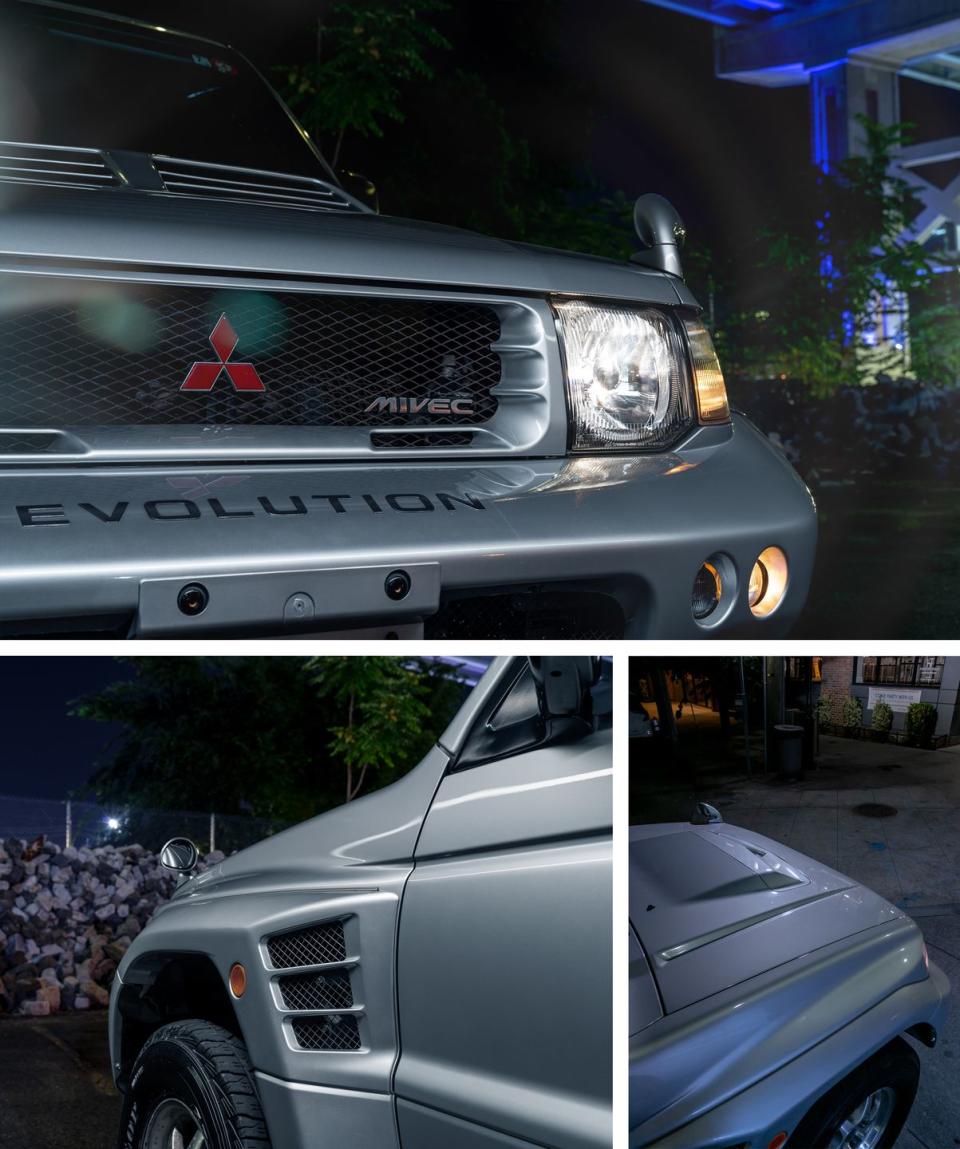The Pajero Evolution Was Mitsubishi’s Saving Grace 25 Years Too Early


The rise of the super SUV is something we all should’ve seen coming. The nation’s ever-increasing appetite for high-riding, spacious vehicles has spiked over the last two decades, with more than half of all new cars sold in the U.S. now being either crossovers or SUVs. But just because people are willing to abandon the sleek bodylines reserved for coupes and sedans doesn’t mean they’re willing to give up speed. So cars like the Range Rover Sport SVR, Jeep Grand Cherokee Trackhawk, and Mercedes-AMG G63 were born. Is anyone really surprised the Urus is Lamborghini’s most popular car ever? I’m not.
Mitsubishi, a manufacturer well past its prime, once sold one of the greatest super SUVs of all: The Pajero Evolution. The only problem: It came 25 years too early. A product of the company’s Dakar efforts in the late Nineties and early 2000s, it was rare—just 2693 were built—and only sold in Japan. It was the answer to the super SUV question long before SUVs became mainstream. But it remained mostly locked away from the world. And that’s a shame, because it’s an incredible driving experience.
It doesn’t take long for people to start staring. Whether it’s the toy-like proportions, Batmobile winglets on the rear, the ultra-wide fenders on the side, or the diving board bumper with the word “EVOLUTION” inscribed into the plastic on the front, the thing is impossible to miss. Even in this subtle silver paint coat, the Pajero Evo is a billboard screaming for attention. This isn’t just a super SUV, this is the GT3 RS of Pajeros.

Things get even more interesting inside. The factory seats, genuine Recaros, look fantastic and provide plenty of support. The gauge cluster, radio, and HVAC controls are designed to deal out as much childhood car-ride nostalgia as you can handle. There’s also a pack of gauges centralized in the dash that show things like direction and oil pressure. No touch screens, no touch capacitive buttons, no nonsense. All the things you need, nothing you don’t.
Like the rally-inspired Lancer Evolution, the hotted Pajero is an entirely different beast underneath the skin versus the standard truck. A 3.5-liter naturally aspirated V-6 unique to the Evo sits under the hood, pushing out 276 hp and 256 lb-ft of torque. It’s attached to a torque converter automatic that sends power to a shiftable 4WD system with Torsen limited-slip differentials front and rear. Mitsubishi went as far as to remove the live axle and put in an independent suspension for better handling. The track width is over four inches wider, promoting a mean, aggressive stance when paired to its relatively short wheelbase.
It’s easy to hop into the Pajero Evolution with low expectations. It’s a truck from the Nineties, after all. Most utility vehicles from this era are loud, unrefined, and generally rougher around the edges than a comparable sedan. When people bought SUVs 20-plus years ago, they bought them because they needed the space and capability, not because they were more comfortable or easier to drive.

Thankfully the Pajero Evolution drives nothing like your average Nineties SUV. While the driving position is a bit awkward, the rally raid long-travel suspension is well-tuned to absorbing broken pavement while delivering a comfortable ride. Visibility is great thanks to the tall glass surrounding the cabin, and because the belt line is well-proportioned, you can hang an elbow out the window without cramping your shoulder. It is, without a doubt, one of the best big-city cruisers in existence.
The biggest surprise is in the steering. With the big, knobby tires and Nineties engineering I expected a ton of vagueness and a nice fat dead spot on center. Instead I got plenty of feel and a pleasantly speedy rack that doesn’t take much effort to turn. The steering wheel itself is refreshingly free of buttons, knobs, and other distractions. That being said, I hate how it looks and I’d immediately swap it out for a three-spoke Momo wheel if given the chance.

 Yahoo Autos
Yahoo Autos 